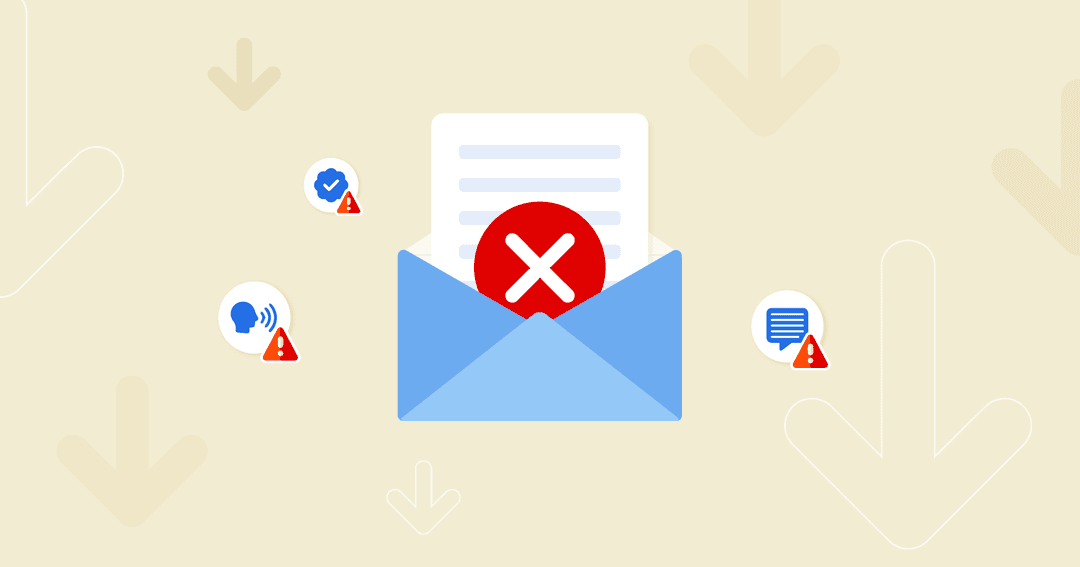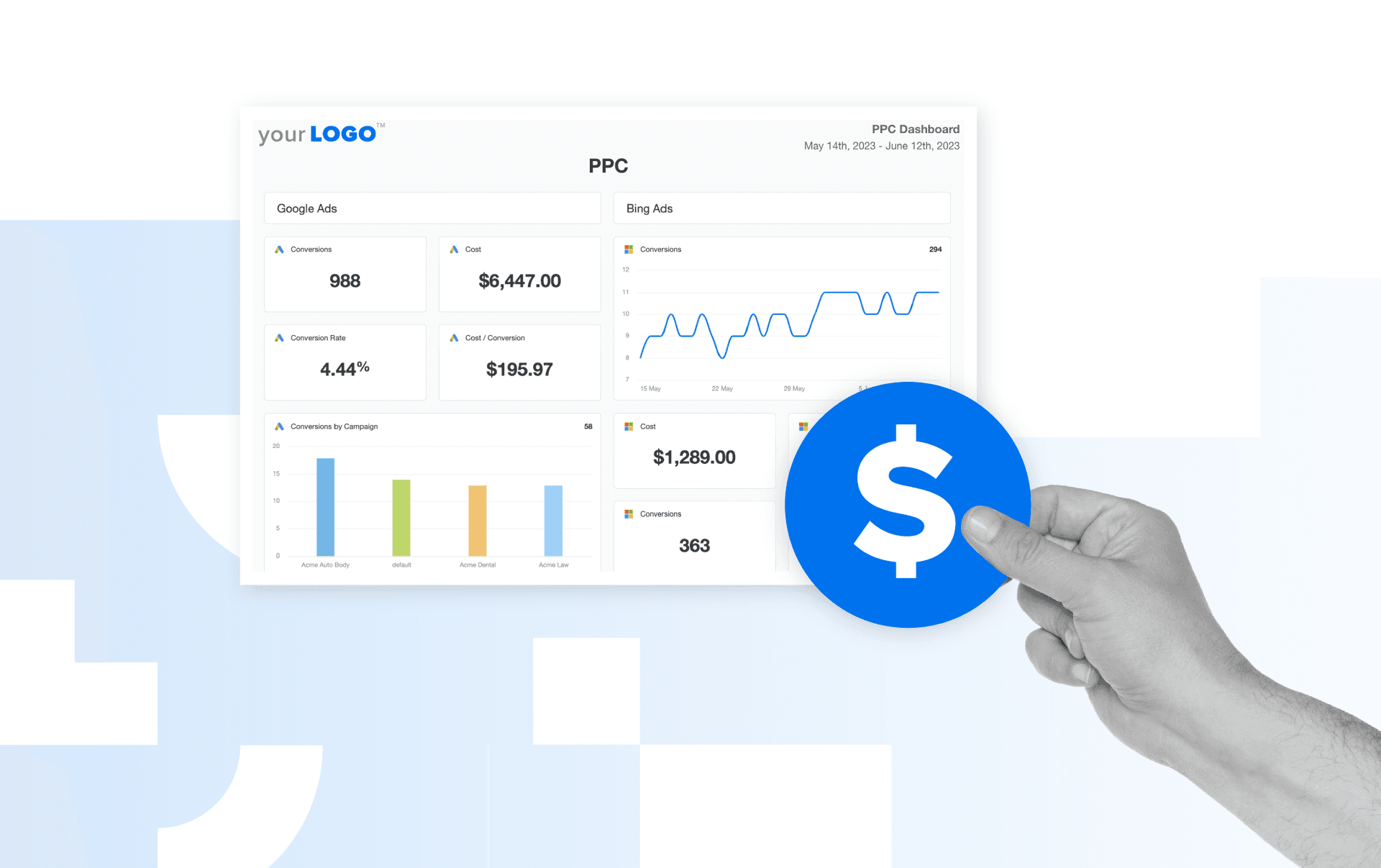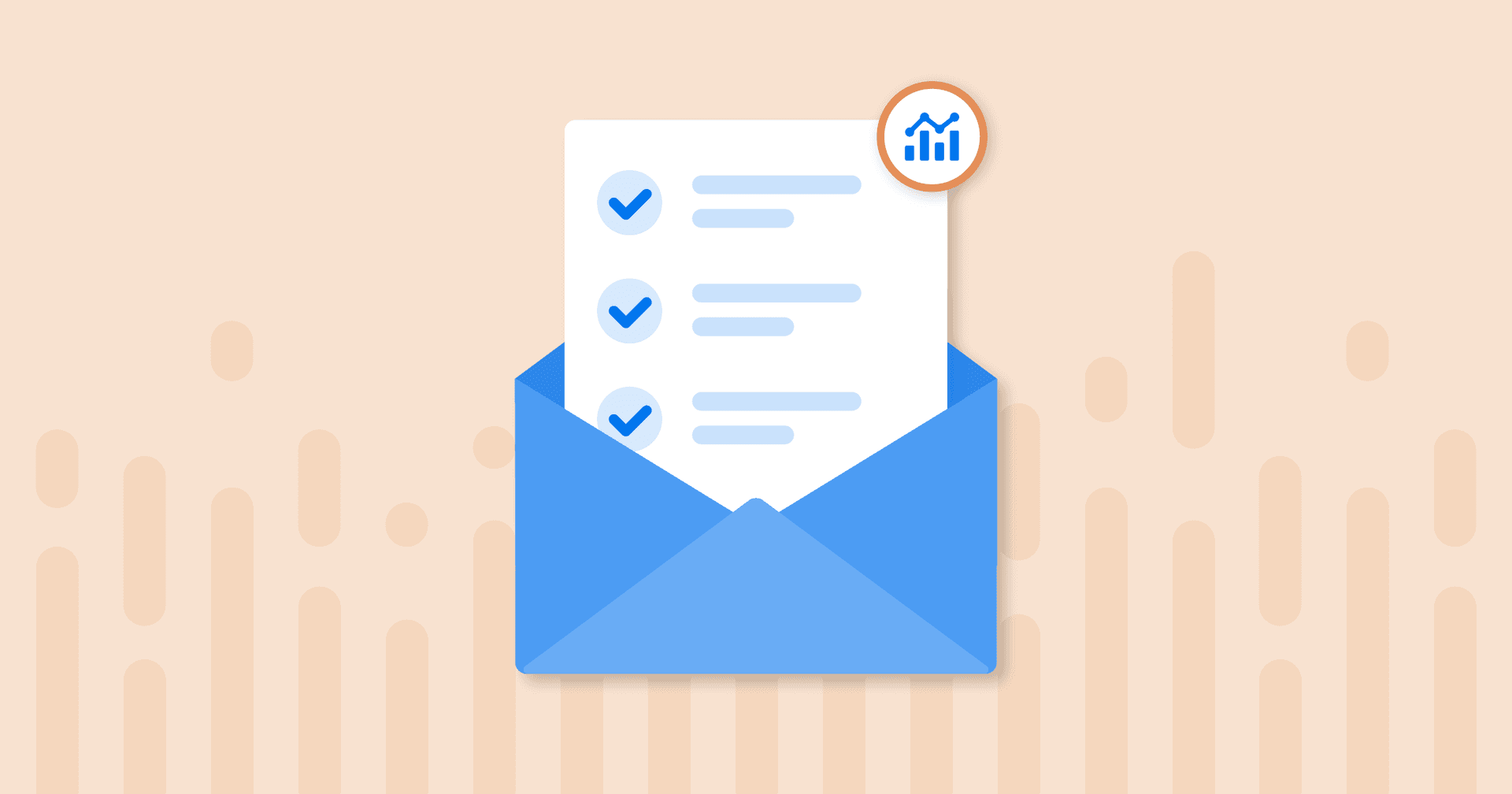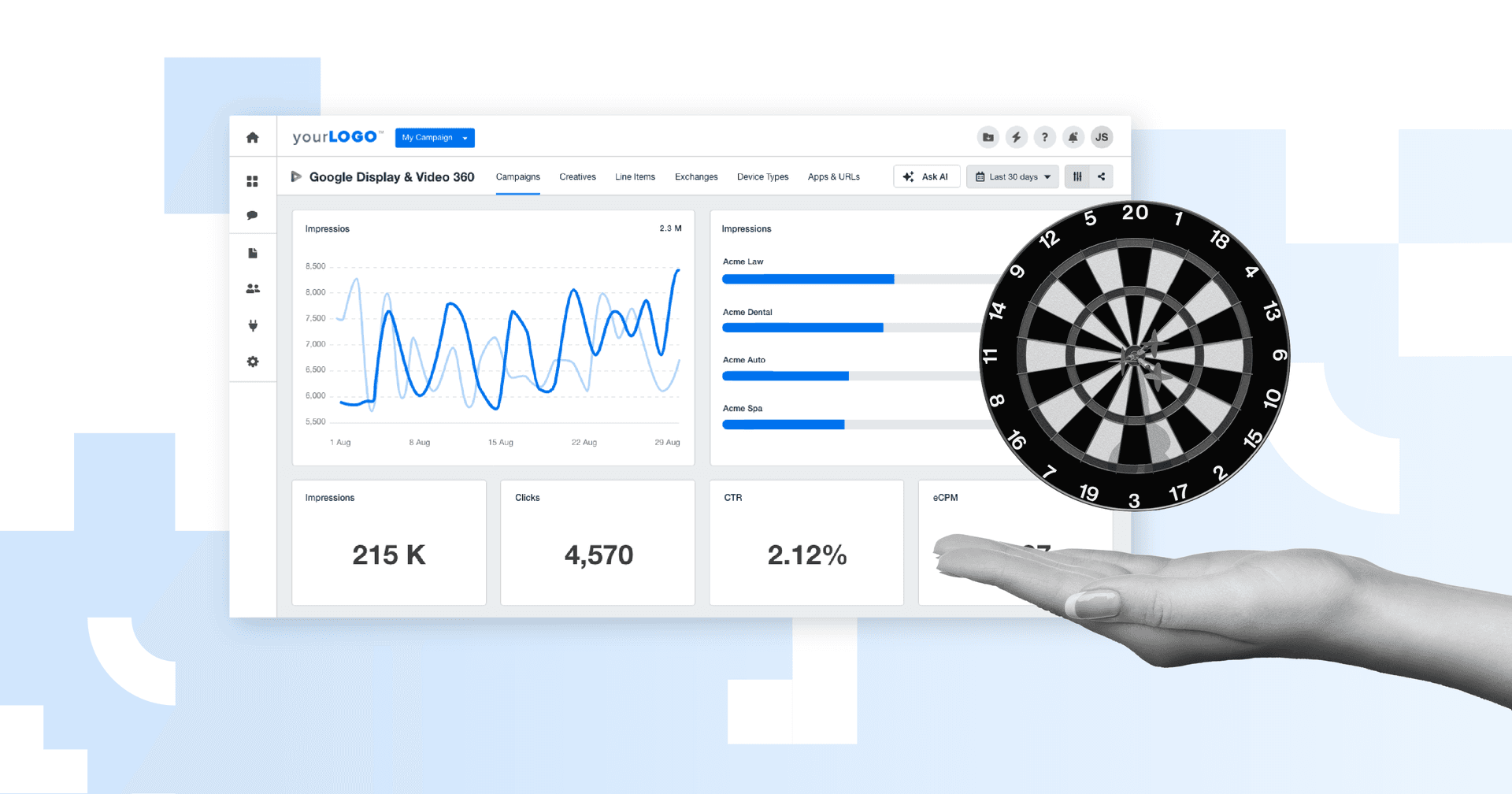Table of Contents
Table of Contents
7,000+ agencies have ditched manual reports. You can too.
Free 14-Day TrialQUICK SUMMARY:
Avoiding cold email mistakes is imperative for marketing agencies to protect their reputations. This guide identifies ten common errors, such as poor subject lines, that undermine email campaigns. Learn actionable strategies to ensure emails make a positive impact, foster genuine connections, and optimize outreach efforts for better engagement and client acquisition.
You've spent countless hours perfecting your agency's marketing strategies, crafting a clever cold email campaign, and fine-tuning your brand's image. Everything seems to be falling into place until–cue dramatic music–the dreaded cold email enters the scene.
Yes, that seemingly innocent message holds the power to make or break your agency's reputation. Making one simple mistake sabotages all of your hard work and drains your agency’s time, money, and resources.
We’re uncovering the top blunders that could send your agency's reputation crashing faster than a flock of seagulls after a bag of chips.
This article covers actionable ways to protect your agency’s reputation, make positive first impressions, seize new opportunities, and utilize resources effectively.
Let’s get started!
Common Email Mistakes To Avoid
A successful cold email aims to establish genuine connections with your clients' audience. You want the initial email to include relevant information such as a link to a blog post or other helpful content and the right contact details to set a client's sales team up with potential customers.
However, it's a delicate balance of incorporating the right amount of information in a credible way in their cold email message. You don't want to run the risk of their cold emails looking untrustworthy and ending up in the recipient's spam folder.
So, we've made a list of the top email mistakes to avoid in a clients' cold email outreach campaign.
Cold Email Mistake #1: Impersonal Messaging
Let’s be clear about one thing. We’re not saying your agency shouldn’t rely on templates for cold emails.
Using a template for specific sections of your message helps speed up your outreach and avoid errors and typos that could occur if you were writing the entire message from scratch each time.
However, templates are often generic, dry, formal, and difficult to personalize. It’s also difficult to impress someone with a templated message.
And if you think that inserting their name and mentioning their company will stand out and come across as personal, that often comes across as spammy.
The key is consistently delivering content that matters to your audience. This often means your content needs to be valuable to the individual–which requires considering how to personalize your email marketing.
Seth Giammanco, Principal, Strategy and Technology at Minds On Design Lab
Another cold emailing strategy that comes across as impersonal is sending mass emails. They can feel robotic and make your targets feel like they’re one of many on a mailing list.
Top Reasons Why This Is a Mistake
Reduces Authenticity: Templates can make your agency's outreach feel scripted and insincere.
Limited Flexibility: Using fixed templates may prevent you from adapting your messaging for evolving trends, industry shifts, or specific client requirements.
Lack of Creativity: Being creative helps your agency stand out from the competition. Relying solely on templates, you may miss out on the opportunity to showcase innovative ideas and your unique brand voice.
What To Do Instead?
For your cold email to work, you must show the person you’ve done the homework. You need to prove that you’ve researched them and their business.
So, the key is to take a balanced approach of combining a template with tailored messaging. If possible, reference specific details about their business or recent achievements to show that you’ve done your research.
Template the generic parts of your cold email, such as the offer and the call to action, but write the rest specifically for the recipient.
This way, you’ll make the message sound natural, and build a connection while still saving time by not having to write the generic information every time.
Agency Tip: Your agency should create an email for every stage of the buyer’s journey to keep consistent personalized messaging as they go through your sales funnel.
Create fully customizable email marketing report templates that are easy to follow, captures all necessary insights, and helps your clients to understand your agency’s value proposition. Get started with a free 14-day trial.
Cold Email Mistake #2: No Attention to Detail
Common cold email mistakes like misspelled words–or even worse–the prospective client’s name, job title, or business name, has serious consequences.
Although a misspelled word may seem like an insignificant blunder, this mistake undermines your agency’s credibility and professionalism.
It implies that you didn’t take the time to verify or double-check the client's basic information. You don’t want to look like you forgot to proofread your cold email for any typos or grammar errors!
And the same can be said for using industry jargon or buzzwords.
Packing your cold email with these often leads to communication breakdown, missed opportunities for connection, and limited accessibility if the receiver has no clue what you’re talking about.
Top Reasons Why This Is a Mistake
Disrespectful or Careless: Using terms that someone may not understand or misspelling their name creates a negative impression and causes people to feel undervalued or unimportant. This mistake damages the relationship before it even begins.
Negative Reflection of Your Agency: Your agency’s image is shaped by its professionalism, attention to detail, and commitment to delivering exceptional results. Misspelling a business owner’s name and using industry jargon tarnishes the image you’ve worked hard to build. You don’t want to appear sloppy, unprofessional or careless and hinder your long-term growth.
Insincere or Inauthentic: Not paying attention to details (big or small) looks like your agency is using a generic approach to impress but that you don’t have a genuine understanding of their needs or even have the potential to provide relevant solutions.
What To Do Instead?
Take a more informative approach and immediately communicate the value your agency will bring to their bottom line. The goal is to build stronger connections and engagement with potential clients making it difficult to refuse your offer. And the only way to do this successfully is by monitoring email engagement metrics.
The most important aspect of email marketing is the ability to share highly targeted messaging.
Bryan Lozano, Vice President of Operations at Ad-Apt
Give relevant and valuable information in a clear and relatable manner with different techniques. For example, try storytelling or asking questions that are more engaging.
Read More: Email Benchmarks Agencies Should Use for Reengagement Campaigns.
Agency Tip: Use concrete examples, like case studies, as proof that your agency has helped clients overcome similar challenges or achieve specific results.
Cold Email Mistake #3: Bad Cold Email Subject Lines
Speaking of detail, don’t forget to put some thought into your cold email subject lines. Bad email subject lines are common cold email mistakes you want to avoid.
To achieve better results in your cold emailing efforts, you want a subject line to be clear, concise, and personalized. You should avoid using a vague or overly salesy email subject line whenever possible.
For example, would you open an email with the subject line, “Our Revolutionary Product Guarantees Results!"? Probably not. This example shows that the email subject line is all about the sender and not the person receiving it.
An example of a more engaging email subject line would be “Boost Your Marketing Game with These Proven Strategies."
Email subject lines are a super important part of your cold email strategy because they influence a person’s decision in opening the email or not. In fact, studies show that 47% of email recipients make their decision solely based on the subject line. So, if the subject line fails to capture their interest, the email is likely headed to the trash.
Top Reasons Why This Is a Mistake
High Unsubscribe Rates: If people feel deceived or tricked into opening an email with a misleading subject line, they’ll likely be frustrated and choose to unsubscribe from your future communications.
Lower Open Rates: Overly salesy or vague subject lines come across as professional or manipulative. This triggers skepticism, resistance, etc., leading to lower open rates. Besides, people are often overwhelmed with marketing emails and have become really good at filtering out obvious sales pitches.
Shows a Lack of Clarity: Vague subject lines don’t communicate the purpose or content of your cold email. Business owners won’t understand why they should open the email or mistake it for spam.
What To Do Instead?
You want to line up your subject line with the content of the cold email so the person on the other end has a great experience reading your message.
Aim to be concise while still conveying your message. Keep character counts in mind, too, because you don’t want your subject to get cut off mid-sentence or abbreviate a word you didn’t intend to.
Mailchimp suggests using no more than 9 words and 60 characters in your email subject lines. Keep in mind that many recipients are reading your email on a mobile device–so shorter is often better.
Of course, you always want to create a sense of urgency while clearly providing value. For example, “Increase Your ROI by 50% With Our Data-Driven Marketing Solutions.”
Cold Email Mistake #4: Not Including a Clear Call-To-Action
Paying attention to a cold email CTA is just as important as the subject line. You need to provide a clear path forward to increase your conversion rates.
A call-to-action helps guide your prospects toward your end goal–whether that’s scheduling a consultation, filling out a form, writing a testimonial, or something different altogether.
Top Reasons Why This Is a Mistake
Lost Conversions: The main goal of cold emailing is to generate conversions. And without a well-defined CTA, your prospects won’t take the desired action, and you’ll miss conversion and agency growth opportunities.
Less Motivation: If you don’t have a clear CTA, your response rates will decrease. People lose motivation to click a link, reply to an email, or schedule a call if you’re not telling them what to do.
Unfoccussed: Including a clear call-to-action helps maintain focus and purpose in the cold email. It guides the recipient's attention and encourages them to take a specific action aligned with your agency's objectives.
What To Do Instead?
Your call to action should align with the overall objective of the cold email and provide a logical next step for the recipient. Similar to getting more PPC clients, your CTA strategies for cold emailing should be compelling, easy to understand, and motivate a business owner to take action.
Place the call-to-action in a prominent location within the cold email. You may need to test different placements, but generally, it’s toward the bottom of the email or in a dedicated section.
Agency Tip: Make sure your CTA is easily noticeable and accessible. You don’t want to make your prospective client scroll extensively to find it.
Also, try to increase the visibility of the call-to-action by using buttons, arrows, or bold formatting to draw attention to it. These visual cues help guide a person’s focus and make the call to action stand out within the body of the cold email.
Cold Email Mistake #5: Information Overload
Overwhelming Although it’s important to provide facts and craft your cold email with valuable information, there is such a thing as too much information.
Think about your own experience and the emails you receive on a daily basis. Everyone only has so much time in a day to read their emails. Your cold email should include just enough information to make a call about whether to take things further with your agency or not.
Top Reasons Why This Is a Mistake
Increased Chances of Being Marked as Spam: A cold email that is overly long or contains excessive information may trigger spam filters or be perceived as unsolicited and spammy. Lengthy and information-heavy emails are more likely to be disregarded, deleted, or marked as spam.
Missed Opportunity for Follow-up Communication: Including too much information upfront gives little room for follow-up questions. This limits the opportunity to nurture the relationship and tailor your message based on their specific needs.
Unable to Quickly Scan or Skim: Overloading the cold email with excessive information makes scanning and comprehending the main points difficult. Lengthy paragraphs make people lose interest and move on without absorbing the crucial details.
Customers need information to move them to the next buying cycle stage; pushing the right content can do just that. It's all about moving these prospects down your sales funnel - not as quickly as possible, but as efficiently as possible.
Bryan Lozano, Vice President of Operations at Ad-Apt
What To Do Instead?
The initial cold email should introduce your agency, tell a prospect what pain you could solve for them, and suggest the next step to take things further.
But include anything beyond that, and you’ll be scaring prospects away.
In this post, Steli Efti from Close.io suggests a number of templates for an email cold call. However, if you take a look at them, each includes roughly only three paragraphs of copy. For example:
And here’s a cold email from Heather R. Morgan, the founder of Salesfolk, a B2B sales emailing agency used to generate 16 new B2B clients for a company they service. It’s even shorter.
So, keep your cold email short:
Introduce yourself and build rapport in the first paragraph.
Include a short elevator pitch in the next.
And close off with a call to action.
That’s all you need to make a great impression and get a prospect to act.
Agency Tip: If you run into any sales objections, such as a prospective client being upset with your cold email outreach, don’t panic. Acknowledge that not every objection is something to overcome. After all, not all sales should happen.
Cold Email Mistake #6: An Overly Aggressive Approach
Having an inbound marketing strategy is crucial for your agency’s growth. However, being overly aggressive or pushy in a cold email quickly turns off your prospective clients. Bombarding them with pushy language, excessive exclamation marks, and relentless demands erodes trust and makes your agency look desperate and unprofessional.
Think of it this way: would you appreciate a salesperson who relentlessly hounds you, bombarding your inbox with endless follow-ups and high-pressure tactics? Unlikely.
The whole point of a cold email is an opportunity to initiate the conversation–not force a sale.
Top Reasons Why This Is a Mistake
Decrease Response Rates: Prospective clients are more likely to ignore or delete aggressive cold emails than engage with them.
Negative Association: Aggressiveness can create a lasting negative association with your agency in the client’s mind. Even if you offer quality services, an aggressive approach may lead the recipient to assume the same level of aggression will be present throughout the partnership.
Negative First Impression: Instead of engaging a client’s interest, being aggressive triggers feelings of annoyance, distrust, and pushes clients away.
What To Do Instead?
A more empathetic and respectful approach builds trust, establishes credibility, and makes them feel like there is a real person on the other side of the cold email. Avoiding an aggressive approach also demonstrates your agency’s genuine interest in helping clients succeed.
Use a friendly and respectful tone in your cold email copy. A conversational tone shows that your agency is focused on building a connection rather than making a hard sell.
A carefully crafted cold email offers value, respects boundaries, and invites a genuine dialogue. And this approach is far more likely to garner a positive response and lay the foundation for a long-lasting client-agency partnership.
Marketing agencies should give email marketing as much, if not more, care and attention than other, more expensive marketing channels. Too often, because it's low cost, people just go through the motions and make little to no attempt to differentiate their campaigns.
James Middleditch, Director of Digital Group Media
Email is still very much alive, and it's not going away anytime soon. In fact, cold emailing can be more effective than social media. If your agency isn’t trying it for cold-calling prospective clients, you could be seriously missing out on opportunities to grow your business.
Cold Email Mistake #7: Poor Timing and Frequency
Imagine sitting at your desk sifting through the mountain of emails in your inbox when suddenly, ding!—another cold email lands in your inbox. You open it, only to discover it's the third one this week from the same marketing agency. Annoyed, you hit delete without a second thought.
Poor timing and frequency in cold email deliverability is a real deal-breaker. It highlights your agency negatively while giving the perception of desperation. What agency would want potential clients to be annoyed or irritated after all that work crafting the perfect cold email? You don’t want potential clients to think you’re struggling to generate leads or secure clients by bombarding them with several cold emails.
Top Reasons Why This Is a Mistake
Irritating and Intrusive: Clients may become frustrated and choose to ignore or delete the emails altogether, hindering any potential for engagement or future business.
Wasted Resources: Poor timing and frequency practices consume your agency’s valuable time, effort, and budget that could be better utilized on more targeted and strategic marketing strategies.
Negative Perception: Sending a cold email at inappropriate times comes across as spammy, unprofessional, and disrespectful of the person’s time and privacy.
What To Do Instead?
The goal is to captivate (not aggravate) your recipients.
So, how often should you hit that "send" button for your cold emails?
There's no one-size-fits-all answer to when and how often you should email your list. And it likely depends on the industry your marketing agency serves. Some may find a weekly cold email deliverability schedule works best for their agency and others may find a monthly approach bringing in results.
The goal is consistency. Once you establish a regular pattern, you'll create a cadence that keeps you top of mind without overwhelming your recipients.
Your cold email frequency directly impacts open rates, unsubscribe rates, and customer engagement. According to Campaign Monitor, a good cold email open rate is between 17-28%, depending on your industry. Knowing these numbers is a great starting point, so looking into your specific industry averages and comparing metrics is worthwhile if possible.
Agency Tip: By tracking important email KPIs, your agency will clearly see patterns of open rates and determine the best frequency for cold emailing.
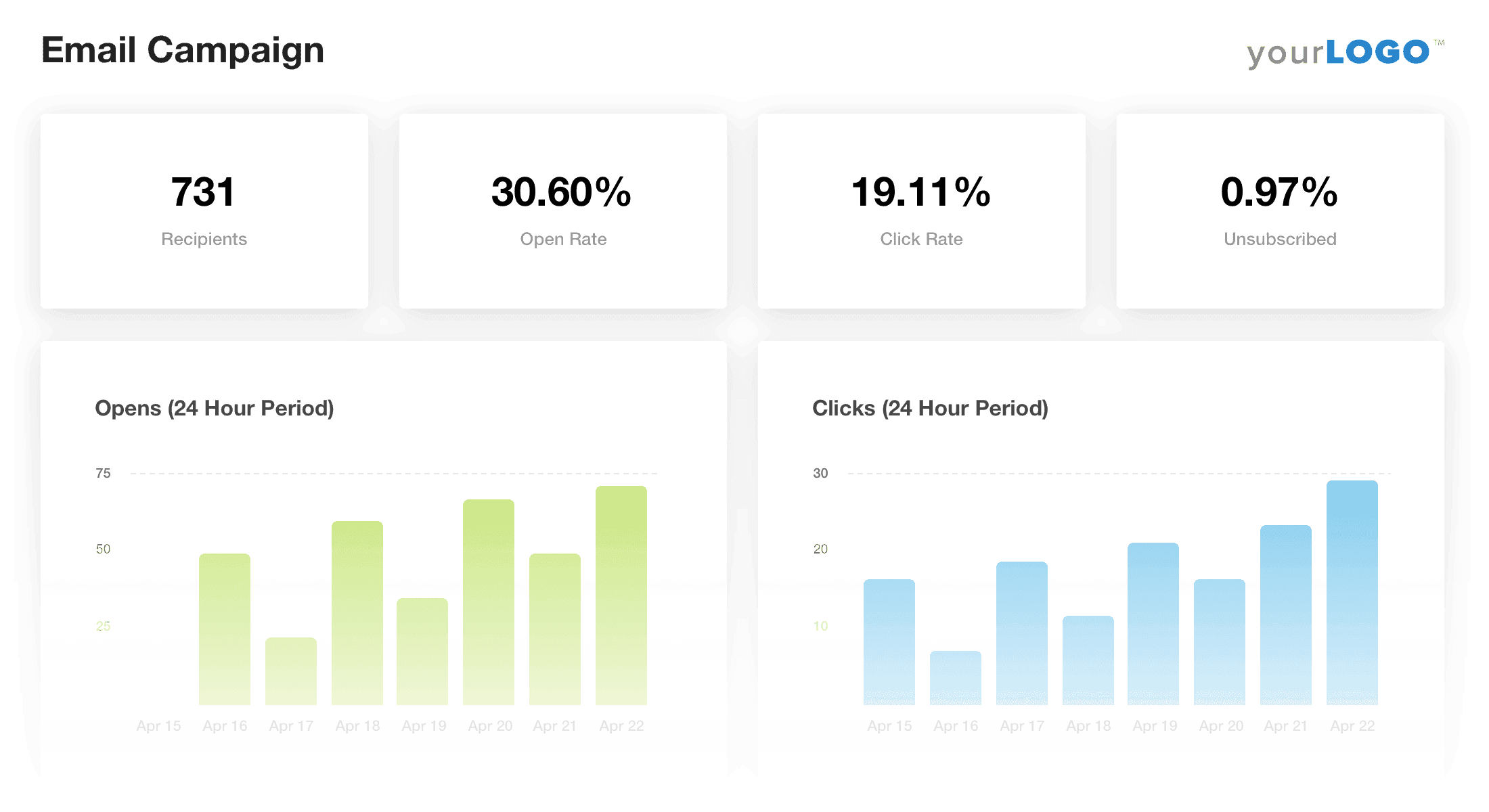
Track your agency’s cold emailing efforts in a single dashboard to understand what strategies are successful and which are not. Start your free 14-day trial.
Cold Email Mistake #8: Appearing Untrustworthy
Leaving your pitch aside, your prospect’s response to your cold email relies on one thing only – whether they trust you or not.
If your agency comes across as trustworthy and credible, they will feel like they're communicating with a real person and likely consider your offer.
But fail to communicate your credibility, and your name goes straight onto the blocklist.
This also includes hiding links throughout your cold email.
In times of (well-justified) paranoia about internet privacy and security, the last thing you should do is send disguised links that don’t reveal the content or information behind them. Sending links using bit.ly or other URL shorteners trigger security concerns.
If you want someone to click your link, tell them what it is and include the full URL. This way, you’ll overcome their privacy and security concerns but still convince them to click it.
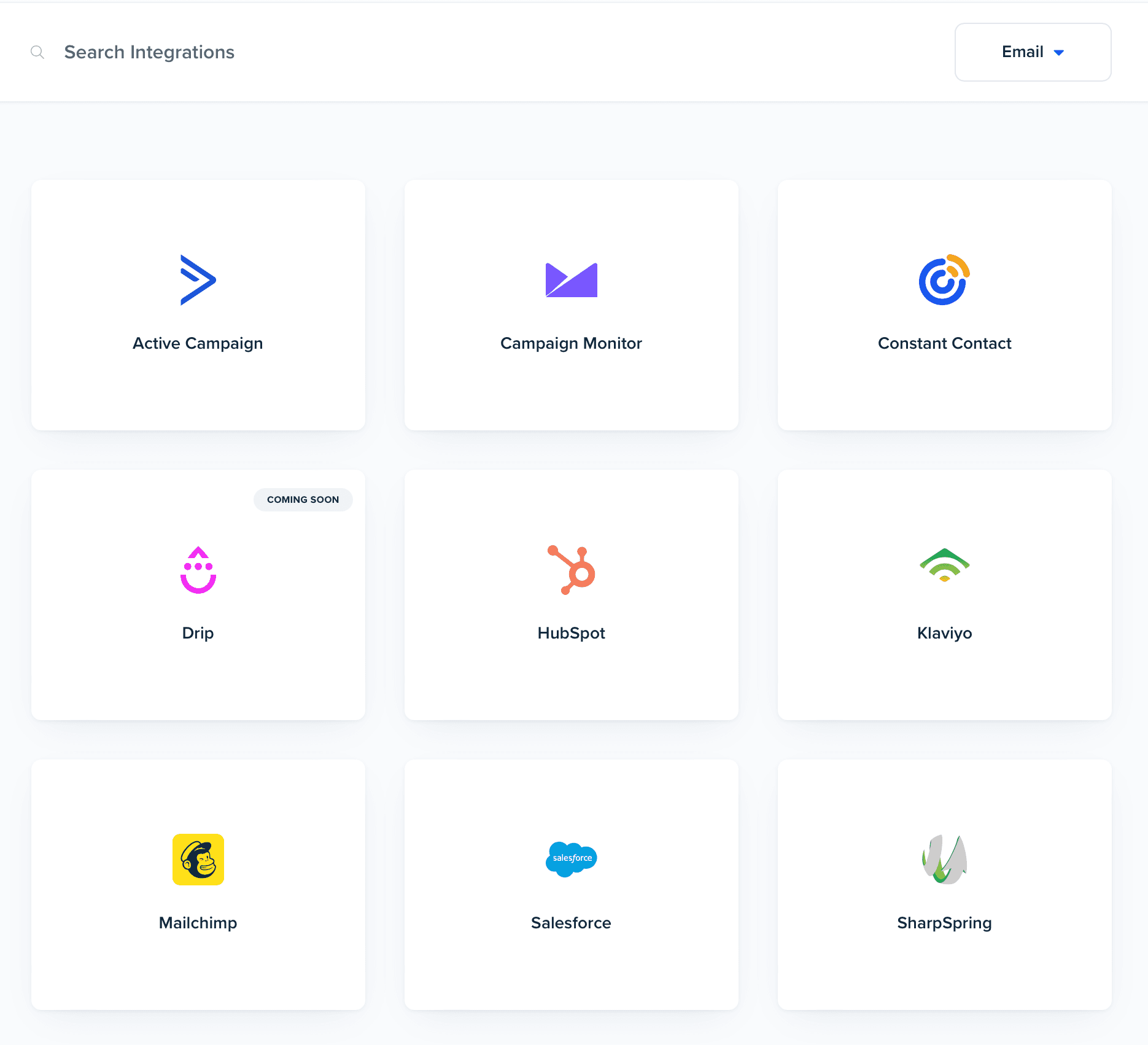
Monitor which links or CTAs are resonating in your cold email outreach. AgencyAnalytics has over 80 marketing integrations, providing a comprehensive view of your cold email performance and marketing channels. Start your 14-day free trial to quickly identify emails with the highest open rates.
Top Reasons Why This Is a Mistake
Reduces Chances To Build Trust: If a prospective client writes your agency off as untrustworthy right off the hop, you’re unlikely to get the chance to earn their business and work with them further.
Promotes Fear: Potential clients will shy away from your agency if you appear deceitful or untrustworthy.
Legal and Ethical Implications: Misleading statements or false claims can lead to legal consequences. Adhering to legal and ethical guidelines is crucial for maintaining a positive reputation in your industry.
What To Do Instead?
So, how do you tell a prospective client that your marketing agency is trustworthy?
As we mentioned earlier, including content such as case studies or statistics to back up your claims is always helpful. Testimonials also highlight positive experiences and results from satisfied clients.
The goal is to provide tangible evidence of your agency's expertise and build trust through real-world examples.
Agency Tip: Avoid exaggerated claims or misleading statements. You should be transparent and clearly articulate what you have to offer and how you can realistically address pain points or achieve specific goals.
Another simple way to build trust through cold emails is to include a professional email signature. Sign off the email with your client's credentials and a photo so the recipient can easily put a face to the name.
Cold Email Mistake #9: Not Segmenting Audiences
Segmenting cold email audiences helps nurture relationships more effectively. You strengthen customer loyalty and satisfaction by delivering relevant and valuable content to each segment. It also helps to ensure you don't send your client's cold email to the wrong person!
Segmenting your target audience creates opportunities for personalized follow-ups, recommendations, or exclusive offers that resonate with your prospects. This, in turn, makes them feel understood and valued–resulting in higher chances of them working with your agency.
Top Reasons Why This Is a Mistake
Lower Click-Through Rates: Relevant and personalized emails are more likely to capture attention and prompt people to take action. By not segmenting your cold email audiences, you can’t deliver content that aligns with the interests and needs of each segment, leading to lower open rates and click-through rates.
Lower Conversion Rates: Targeting specific segments with tailored messages helps improve conversion rates. Unlike blindly sending out a cold email to a broad audience, segmenting delivers precise offers and relevant information to your prospects. This level of personalization increases the chances of higher conversion rates.
Lack of Data-Driven Insights: If you’re not segmenting your cold email audiences, you miss out on valuable data and insights about behavior, preferences, and response patterns, while running the risk of sending the cold email to the wrong person. As you continue to monitor the metrics, you’re able to further refine segmentation criteria, messaging, and timing–producing better results over time.
What To Do Instead?
Cold email audience segmentation is another great example of why your marketing data is crucial in making effective decisions for your outreach strategy.
Your segmentation approach may vary based on your agency’s industry, target audience, and specific goals of cold email campaigns. But, creating an email marketing analytics report or dashboard helps you understand the audience's unique characteristics and tailor strategies accordingly.
Regularly review and refine segments based on performance metrics and client feedback to ensure long-term success.
Some examples of audience segmentation include:
Behavior-based segmentation: Have they interacted with your website before?
Company size segmentation: This also applies to industry, revenue, geographical location, and demographics.
Lead magnet segmentation: If prospects have shown interest in specific lead magnets or downloadable resources, segment the audience based on their preferences. This gives you a chance to provide follow-up content or offers related to the initial lead magnet and increases the chances of conversion.
Cold Email Mistake #10: Forgetting To Follow-up
Follow-up is a critical component of the sales process. It helps your agency build relationships, address concerns, and guide prospects toward conversion.
This is a huge inefficient mistake to make when it comes to cold emailing. Failing to follow up means the investment made in time, effort, and resources reaching out to potential clients goes to waste. Maximizing your return on investment is important by diligently following up and nurturing relationships with leads.
Top Reasons Why This Is a Mistake
Missed Opportunities: Follow-ups give your agency extra chances to engage with potential clients who have shown some initial interest. By neglecting a follow-up, you miss out on opportunities to build rapport, answer questions, address concerns, and ultimately convert leads into customers.
Lack of Dedication: Persistence is often crucial in sales and marketing. Prioritizing your follow-up strategies demonstrates dedication and a genuine interest in the business owners’ needs.
Competitive Advantage for Rivals: Especially in competitive industries, prospects may be receiving a cold email from multiple agencies all the time! By failing to follow up, your agency risks giving an advantage to competitors who do follow up. And those competitors may seize the opportunity to establish connections and increase their chances of securing the business.
What To Do Instead?
So, how often do you follow up with a client without being annoying or pushy?
You don’t want to risk following up too often, too early, or too late. According to Cleverly, your first cold email follow-up should be no later than three days after your initial cold email. They also say four to seven follow-up emails yield the best results.
The email signature should include ways for the recipient to get in touch, but the best way to keep track of your cold email outreach is with email marketing software. From client relationship management to marketing automation, you’ll save valuable time, streamline processes, and increase the chances of client retention.
The Takeaway
There you have it. Avoid the biggest cold email mistakes to get your clients the best long-term results. The effectiveness of cold email campaigns has the potential to make or break your agency's outreach efforts and acquire new clients.
You gain valuable insights into open rates, response rates, conversions, and overall engagement by tracking your cold email metrics. This data provides a roadmap for optimization, enabling agencies to refine their targeting, messaging, and timing for better results.
But remember–It's not just about sending cold emails blindly; it's about measuring, analyzing, and refining to build stronger connections, maximize conversions, and drive sustainable marketing agency growth.

Written by
Richelle Peace is a writer with a degree in Journalism who focuses on web content, blog posts, and social media. She enjoys learning about different topics and sharing that knowledge with others. When she isn’t writing, Richelle spends time teaching yoga, where she combines mindfulness, movement, and her passion for wellness.
Read more posts by Richelle PeaceSee how 7,000+ marketing agencies help clients win
Free 14-day trial. No credit card required.


